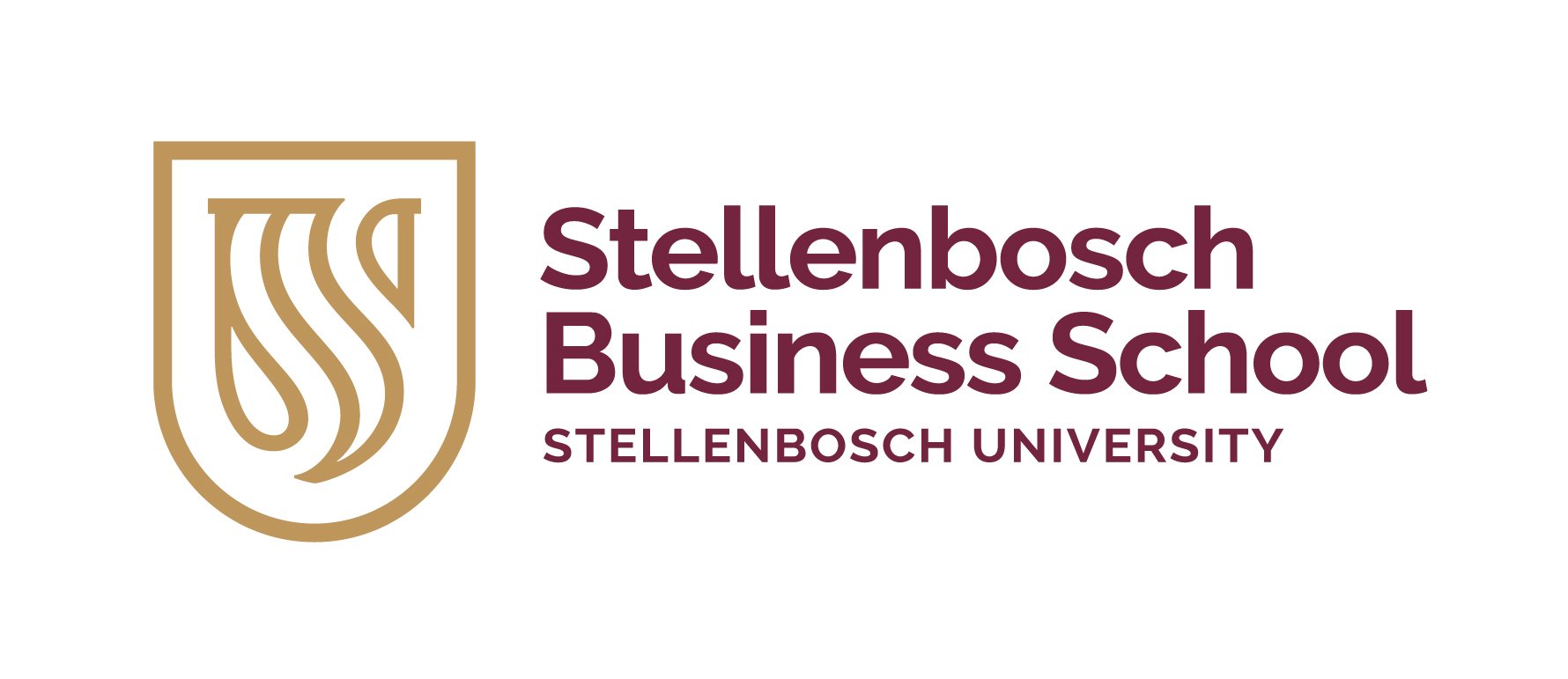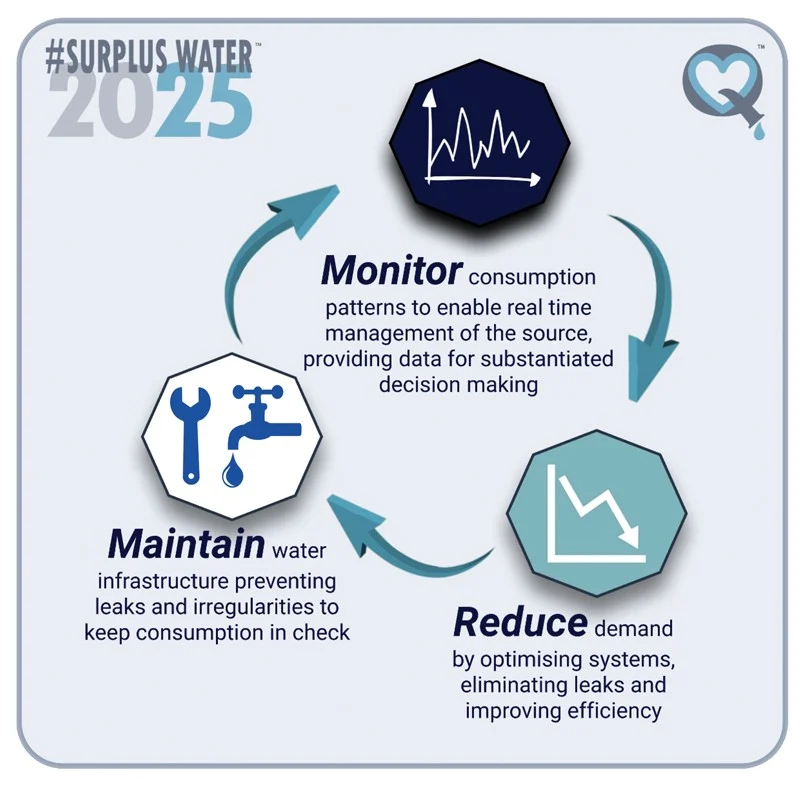Using my MBA to get to #SurplusWater2025
I embarked on the MBA journey at the University of Stellenbosch Business School on the Modular programme in 2014. As a Mining Engineering Lead, responsible for the long-term planning of one of the largest diversified mining groups, I had a solid job with bright future within the company. However, with the quality input from the MBA programme I decided to take the risk and halfway through the MBA programme started my own business. It was not because of unhappiness, working for an employer or the dream of “freedom”, but to try and make our beautiful country a better place – by focusing on water.
The USB MBA was an amazing journey for me – not just because of the tools that it provided for what I wanted to do, but also the people I met.
The USB MBA was an amazing journey for me – not just because of the tools that it provided for what I wanted to do, but also the people I met. These people, who started as fellow students, became friends and will forever be close to my heart. The MBA for me, was a very well-structured toolbox. A toolbox that one can carry with you for the rest of your life – filled with tools for all possible situations. Tools that will not only provide confidence in the business world, but more even, develop character, help build relationships and most of all, tools to change the world, and save our planet!
The business
I started AQUAffection with a bold goal, but small, humble applications. We identified the need to manage and conserve water in South Africa, by providing high quality products and services related to water conservation, with the bold goal of getting everyone to do their part to ensure surplus water in South Africa by 2025.
Today, just over three years later, we have made some good strides, but still a long way from the goal, so I realised that we can only achieve this by working together – everybody. There are so many great water initiatives out there, and enormous work done in water conservation that I decided to try and pull everyone’s efforts together under one banner – #SurplusWater2025.
With a growing global population (currently netting around 120 000 people per day — this is births less deaths), the demand for potable water is increasing daily. In 1975, water scarcity was limited to a small number of countries in North Africa, Europe, and the Middle East. By 2000, water scarcity had spread to many large and densely populated countries in Asia.
In South Africa, we have moved from being a water-stressed country to a water-scarce country, and we are currently the 30th driest country in the world. Predictions are that by 2025, South Africa will form part of the ‘extreme scarcity’ category.
With over 100 commercial property sites currently being monitored and managed by AQUAffection, and used as case studies, some of which have been running for more than two years, the results have already proven to be remarkable with most sites seeing a water savings of at least half of the original consumption. This has been achieved by creating solutions around efficiency, fixing leaks timeously, and reducing demand. This not only saves our precious potable water, but it is a massive saving on costs that can essentially be transferred to tenants, making these properties more sustainable in the long run.
To date we have saved more than 300 million litres of water just by improving efficiencies, without costing the end user a lot of capital or sacrificing convenience – just helping them use what they have so much better! What makes this more significant is that it was achieved from as little as 40 commercial buildings, with the number currently growing by a million litres per day. This number becomes even higher with more buildings being added continuously.
I used these case studies for my final research dissertation, and the reality is that we don’t have to keep trying to re-invent the wheel. We need to turn our approach to water use upside down, and focus on demand first, as opposed to supply. It is possible to significantly reduce the demand, creating a realistic, cost effective and sustainable solution to a growing global water crisis. We should stop looking for alternative sources to supply an inefficient demand network. First lower the demand, then only look at alternative source to supply a leaner demand. Obviously the research and work going into alternative supply sources should not stop, but a lower demand has a direct impact on the supply planning, effectively meaning smaller pipe sizes and lower supply pressure systems (high pressures increase the number of pipe bursts, as well as the effect of leaks in a deteriorating supply network). Lower demand will further benefit things such as our wastewater treatment plants that are already so overloaded that their function cannot be sustained, since less waste is generated and these facilities can then work effectively.
The whole objective of #SurplusWater2025 is to get as many companies and people involved as possible, because our water security is everyone’s responsibility — and therefore everyone should actually be involved. It is not a marketing or money making tool and no individual companies, through this initiative that stand to benefit above another — it’s not an opportunity to get more business, but about what we can achieve with a collective effort. Also, this initiative operates as a totally separate entity and the idea is that companies will want to be a part of it because the goal is more important than any individual company.
So, how does this work?
You may be wondering how it can be possible to turn this around to have surplus water by 2025? Well, it’s really as simple as steps 1, 2, 3.
- Step 1: Know your history
By analysing historical water consumption, the historical average daily consumption is calculated. The demand of any facility cannot be fully understood by only taking meter readings on a monthly basis, since this only provides a snapshot of total demand. This provides a baseline from where the reduction in demand will be measured.
- Step 2: Continuously monitor consumption
By installing an automatic meter reading (AMR) device on your main incoming line, the demand profile becomes much clearer, highlighting leaks and night-flows.
- Step 3: Reduce the demand
The focus moves to improving efficiency. This is done by optimising irrigation, rectifying leaks, analysing cooling systems, and then auditing sites for other leaks and inefficiencies. Replace tap aerators and toilet flushing mechanisms with patented toilet outlet valves to significantly reduce consumption further. Research shows that toilets consume more than 50% of water in any commercial building, with all other aspects influencing demand, in check.
Some of the products and applications we apply to improve efficiency are:
- Optimise irrigation for specific landscape
- Leak detection and monitoring
- Site-wide audit on all water endpoints — showers, taps, geysers, water features, cooling towers
- Very low cost, patented toilet flushing mechanism
- Tap aerators that can reduce tap demand by up to 97%.
- SETA-accredited training on efficiency and behavioural changes, because creating awareness and changing people’s behaviour and attitude towards water is such a critical element.
How to get involved
- Register your company or business on surpluswater2025.com and join a community of consumers and suppliers to make a difference, whether you supply monitoring equipment, efficiency devices or services.
- Reduction in demand from the collective efforts will be shown on multiple platforms to track progress towards #SurplusWater2025.
- The #SurplusWater2025 trademarks are available to use on building, communications and marketing.
Water scarcity in South Africa is not a temporary problem. One good rainy season only lightens the load on the system for a short time but cannot permanently supply an ever-increasing demand. Water cannot be created. Therefore, the volume of water we have, is the volume of water we will always have, and we subsequently need to look after it.
Alternative sources will only be viable as a supplement to an efficiently run water-demand network.
In short, lower consumption generates less waste, resulting in wastewater treatment plants (WWTPs) not running over their capacity. Government and municipalities save on reticulation cost (that can be used to maintain current infrastructure) and wastewater treatment. The end user saves money. The environment then recovers.
This is the foundation and whole objective of #SurplusWater2025 initiative: to get as many companies and people involved as possible from the private sector, institutions, and government, because our water security is everyone’s responsibility — and therefore everyone should be contributing to a collective success, with proper monitoring and efficiency as the foundation.
Subscribe
Want to stay in touch with the Stellenbosch Business School community? Sign up and receive newsletters from our desk to your inbox.
SIGN UP

